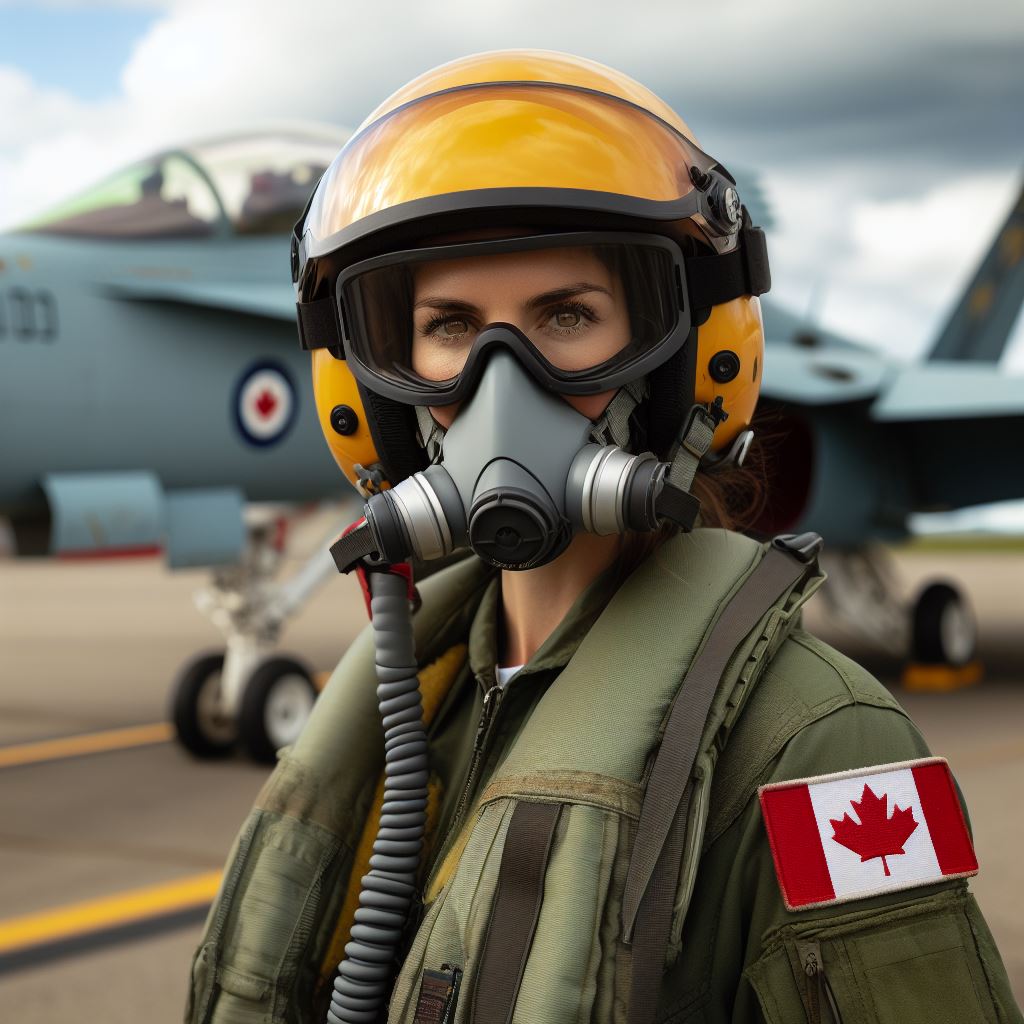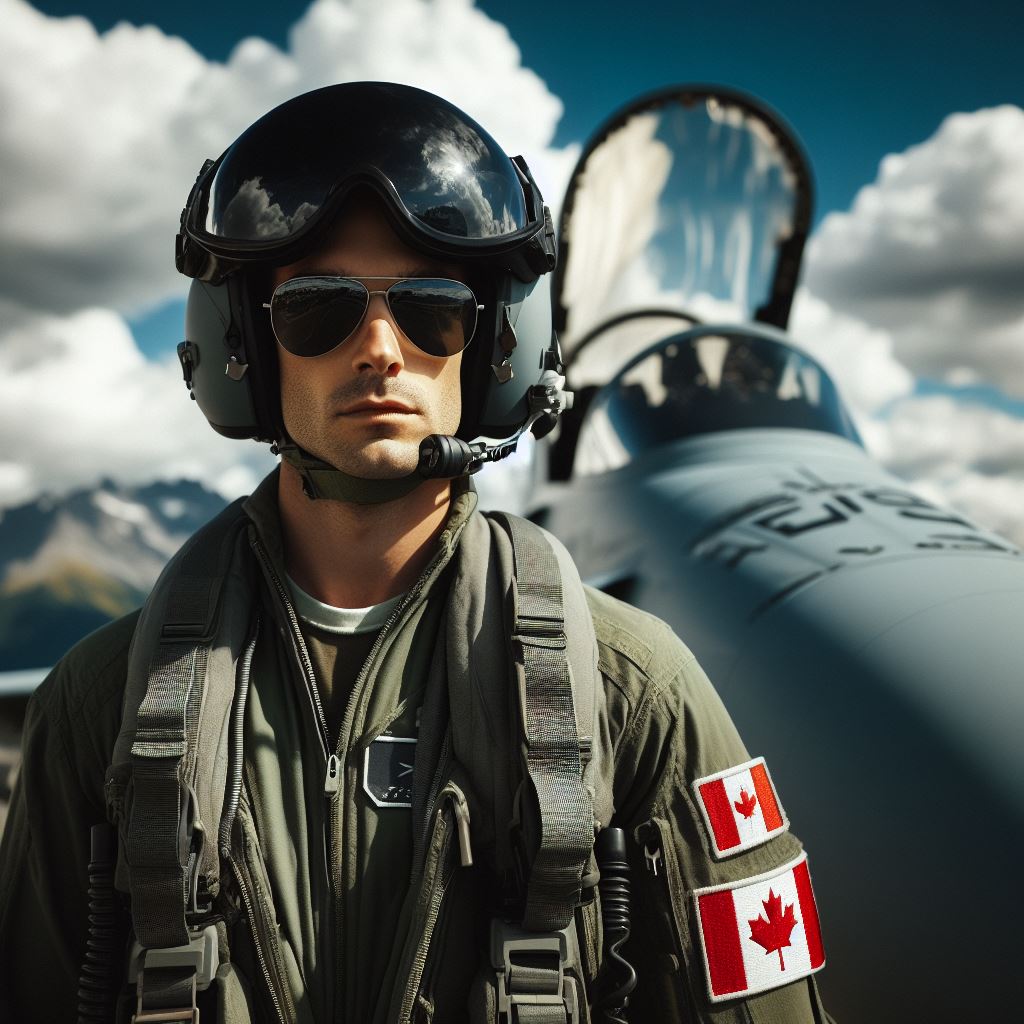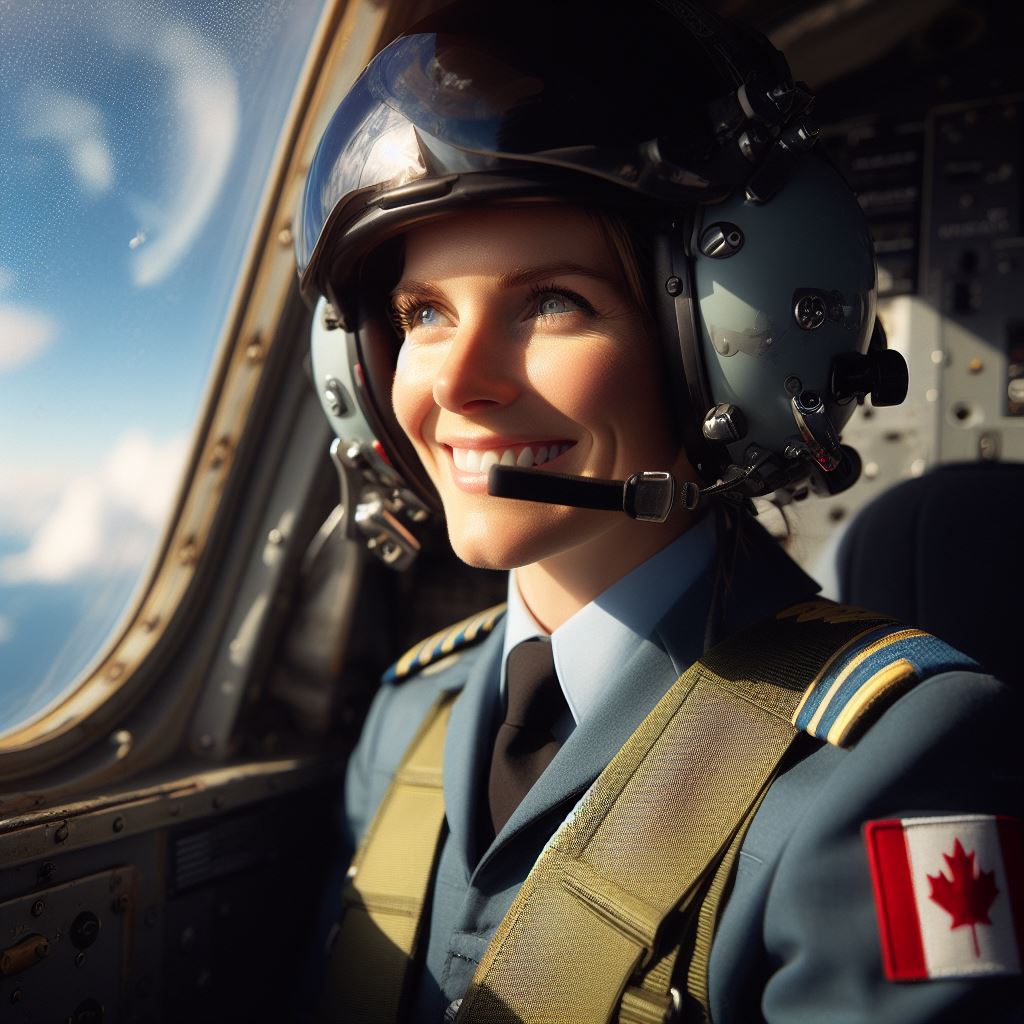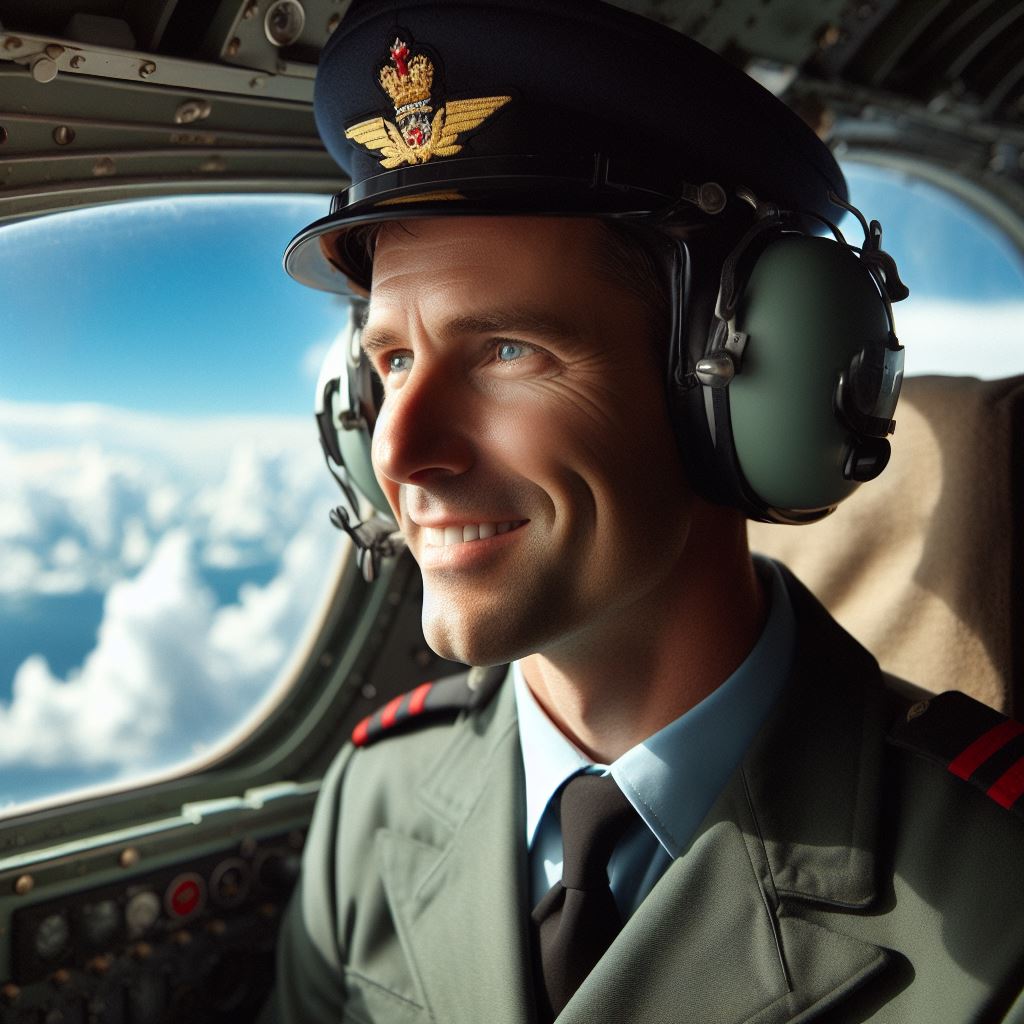Introduction
Being a Canadian pilot is a prestigious and vital role in the aviation industry.
Pilots play a crucial role in ensuring safe and efficient air transportation.
In this blog post, our aim is to provide a glimpse into a typical day in the life of a Canadian pilot.
As the golden rays of the early morning sun cast a warm glow over the vast expanse of the Canadian landscape, a new day unfolds for the daring aviators who navigate the endless skies above.
The life of a Canadian pilot is a captivating journey filled with a unique blend of adventure, responsibility, and an intimate connection with the awe-inspiring beauty that stretches from the rugged Rocky Mountains to the pristine lakes of Ontario.
In the predawn hours, the pilot’s day begins with a sense of anticipation and purpose.
Stepping into the world of aviation, where every flight is an intricate dance between man and machine, these intrepid individuals embark on a daily odyssey that takes them above the rolling hills, dense forests, and sprawling cities that define the Canadian tapestry.
In this day-in-the-life narrative, we will follow the captivating story of a Canadian pilot, from the first light of dawn to the serene moments when the sun dips below the horizon.
Through the lens of their experiences, we’ll explore the challenges and triumphs that characterize their profession, and gain insights into the unique blend of skills, knowledge, and passion that propels them through the boundless skies of the Great White North.
So, buckle up and join us as we soar through a day in the life of a Canadian pilot, where the sky is not just a destination but a vast canvas for their airborne adventures.
Overview of the Job
The role of a pilot and their responsibilities
A pilot plays a crucial role in the aviation industry, operating aircraft and ensuring a safe journey for passengers and cargo.
The responsibilities of a pilot include planning and executing flights, adhering to flight schedules, and following all safety protocols.
The different types of pilots
There are different types of pilots, including commercial pilots, private pilots, and airline pilots, each with their own unique duties and requirements.
Commercial pilots are typically hired by organizations to transport goods or passengers, while private pilots usually fly for leisure or personal reasons.
Airline pilots work for airlines, navigating scheduled flights and conducting pre-flight inspections.
The qualifications, licenses, and training required to become a pilot in Canada
To become a pilot in Canada, several qualifications, licenses, and training are necessary.
Aspiring pilots must have a high school diploma and be at least 18 years old for a commercial pilot’s license.
They must also obtain a medical certificate, showing they are physically fit to fly.
Additionally, candidates must complete a certain number of flight hours and pass written and practical examinations.
Training for pilots involves classroom instruction, simulator sessions, and actual flight experience.
Once all requirements are fulfilled, individuals can apply for a pilot’s license from Transport Canada.
Continuous training and education are necessary for pilots to keep up with advancements in aviation technology.
Pilots must also possess good communication skills, decision-making abilities, and situational awareness.
Read: Pilot Salary Ranges in Canada
Pre-flight Routine
The importance of pre-flight preparations
The pre-flight preparations are of utmost importance for a Canadian pilot. It ensures the safety and efficiency of the upcoming flight.
Unlock Your Career Potential
Visualize a clear path to success with our tailored Career Consulting service. Personalized insights in just 1-3 days.
Get StartedThe checklist that pilots go through before every flight
Before every flight, pilots meticulously go through a checklist to ensure that all essential tasks are completed.
The various tasks involved in pre-flight, such as inspecting the aircraft, reviewing flight plans, and checking weather conditions
Inspecting the aircraft is the first task in the pre-flight routine.
This involves checking the exterior, interior, and cockpit instruments for any signs of damage or malfunction.
Reviewing the flight plans is another crucial step. Pilots need to familiarize themselves with the route, waypoints, and any potential airspace restrictions.
Checking weather conditions is vital to understanding the potential challenges and hazards that may arise during the flight.
Pilots also need to ensure that they have all the necessary documents and equipment on board.
This includes licenses, medical certificates, and emergency equipment.
Verifying fuel levels and calculating fuel requirements are essential to determine if the aircraft has enough fuel for the intended flight.
Testing the aircraft’s systems and electronics is another important pre-flight task. Pilots need to ensure that all systems are functioning properly before taking off.
Communicating with air traffic control and obtaining the latest information on runway conditions, taxi routes, and other instructions is a crucial part of pre-flight preparations.
Coordinating with the cabin crew and briefing them on important details, such as emergency procedures and passenger information, is essential for a safe flight.
Performing a final walk-around of the aircraft ensures that there are no visible issues or objects that could pose a threat to the flight.
Overall, the pre-flight routine is a comprehensive process that covers several essential tasks. It allows pilots to identify and address any potential issues before they become critical during the flight.
By following a strict checklist and adhering to standard operating procedures, Canadian pilots ensure the highest level of safety and preparedness for each flight.
Read: How to Become a Pilot in Canada
Flight Operations
The typical schedule of a pilot
The typical schedule of a pilot involves a lot of variation and flexibility.
Pilots usually have irregular working hours, with early morning or late-night flights common.
They have a strict duty time limitation, which ensures they have enough rest between flights.
The process of getting clearance from air traffic control
The process of getting clearance from air traffic control begins with requesting a clearance from the ground crew.
The pilot then contacts air traffic control and follows their instructions for takeoff.
To maintain the flight path, the pilot uses various navigation and communication systems.
They constantly communicate with air traffic control, reporting their position and receiving updated instructions.
The pilot must be prepared to handle changes in the flight plan if directed by air traffic control.
The procedures involved in takeoff, maintaining the flight path, and landing
During takeoff, the pilot follows a set of procedures to ensure a smooth departure.
This includes applying the correct takeoff power, monitoring the engine parameters, and maintaining the appropriate speed.
The pilot also needs to verify that the aircraft is properly configured for takeoff.
This includes ensuring the flaps and slats are set correctly, as well as verifying the trim settings.
Once airborne, the pilot continues to communicate with air traffic control to receive updates on the flight path.
They must also monitor the aircraft’s systems and instruments to ensure everything is functioning properly.
In case of any deviations from the flight plan, the pilot must notify air traffic control and seek their guidance.
Landing requires careful coordination between the pilot and air traffic control.
The pilot follows a specific approach and landing procedure, which includes descent, configuring the aircraft for landing, and selecting the appropriate landing runway.
The pilot maintains communication with air traffic control during the approach and landing to receive landing clearance.
They also coordinate with the co-pilot or flight crew to ensure a smooth and safe landing.
During the landing, the pilot maintains control of the aircraft and adjusts the power, pitch, and speed as necessary.
After landing, the pilot follows procedures for taxiing the aircraft to the designated parking spot.
The pilot communicates with ground control to receive taxi instructions and navigates the aircraft accordingly.
The communication and coordination between the pilot and the co-pilot or flight crew
The communication and coordination between the pilot and the co-pilot or flight crew are vital throughout the entire flight.
They work together to ensure a safe and efficient operation, sharing responsibilities and cross-checking each other’s actions.
The pilot and co-pilot make important decisions together, considering factors such as weather conditions, fuel consumption, and aircraft performance.
Their effective communication helps in troubleshooting any issues and maintaining a high level of situational awareness.
Overall, flight operations involve careful planning, coordination, and adherence to procedures to ensure a successful flight.
Read: Top Pilot Training Schools in Canada
In-flight Responsibilities
Duties of a Pilot During the Flight
- Perform pre-flight checks to ensure the aircraft is in proper working condition.
- Coordinate with the co-pilot and cabin crew to ensure a smooth operation.
- Takeoff and maintain control of the aircraft during the flight.
- Follow the assigned flight plan and maintain communication with air traffic controllers.
- Monitor weather conditions and adjust the flight path if necessary to avoid turbulence.
Monitoring the Aircraft’s Systems and Instruments
- Regularly check and interpret critical flight instruments such as altitude, airspeed, and navigation systems.
- Monitor engine performance and fuel consumption to ensure optimal efficiency.
- Keep track of the aircraft’s position, both in relation to the flight plan and other aircraft in the vicinity.
- Scan for any warning signs or abnormal readings in the aircraft’s systems and take appropriate action.
Making Necessary Adjustments for a Safe and Comfortable Journey
- Adjust the aircraft’s heading, altitude, and speed to navigate around adverse weather conditions.
- Manage the cabin pressure and temperature to ensure passengers’ comfort and wellbeing.
- Plan and perform in-flight meal services, if applicable.
- Communicate with passengers through the public address system, providing them with necessary updates and instructions.
- Coordinate with the cabin crew to address any medical emergencies or passenger disturbances.
During the flight, a pilot’s responsibilities go beyond just operating the aircraft.
They are responsible for the overall safety and comfort of their passengers.
By continuously monitoring and adjusting various systems and instruments, pilots ensure that the flight progresses smoothly.
Duties of a Pilot During the Flight
One of the key duties of a pilot during the flight is to fly the aircraft according to the designated flight plan.
They rely on their expertise and the guidance from air traffic controllers to navigate through different airspaces, avoiding conflicts with other aircraft and adhering to assigned altitudes and headings.
Monitoring the Aircraft’s Systems and Instruments
Monitoring the aircraft’s systems and instruments is crucial for a pilot.
They constantly check the flight instruments for accurate readings and any indications of potential problems.
By carefully evaluating the data provided, pilots can make informed decisions and take appropriate actions to maintain the aircraft’s safety.
Making Necessary Adjustments for a Safe and Comfortable Journey
Pilots also need to make necessary adjustments during the flight to ensure a safe and comfortable journey for passengers.
This could involve altering the flight path to avoid severe weather conditions, adjusting the cabin conditions to provide a pleasant environment, or even managing unexpected situations such as medical emergencies.
Maintaining effective communication with passengers is another important responsibility.
Pilots provide regular updates through the public address system, informing passengers about the progress of the flight, expected arrival time, or any significant changes.
Additionally, they address any concerns or questions raised by passengers, ensuring a smooth and enjoyable travel experience.
In short, a pilot’s in-flight responsibilities are multi-faceted.
They not only focus on safely operating the aircraft but also actively monitor systems, make necessary adjustments, and communicate with passengers.
By fulfilling these duties, pilots play a crucial role in ensuring a safe and comfortable journey for everyone on board.
Read: A Day in the Life of a Canadian Pilot

Dealing with Challenges
As a Canadian pilot, there are numerous challenges and difficulties that may be encountered during flights.
It is crucial to address these potential challenges and discuss how pilots handle unexpected situations and emergencies.
Additionally, the importance of remaining calm, making informed decisions, and communicating effectively with air traffic control and passengers should be highlighted.
The potential challenges and difficulties pilots may encounter during their flights
Equipment Malfunction
Pilots may encounter situations where there is a malfunction in the aircraft’s equipment.
This can range from minor issues to critical failures, such as engine or navigation system failures.
In such cases, pilots must rely on their training and experience to troubleshoot the problem and identify the best course of action.
Weather Conditions
Weather conditions can change rapidly, posing challenges to pilots during flights.
Inclement weather like thunderstorms, heavy rain, and gusty winds can affect visibility and create turbulence.
Pilots must closely monitor weather reports and work closely with air traffic control to modify flight plans or make diversions if necessary.
Air Traffic Congestion
Busy airports and crowded airspace can sometimes lead to congestion and delays.
Pilots must be prepared to face delays in takeoff, landing, or routing.
It is essential to remain patient, follow air traffic control instructions, and maintain situational awareness to ensure a safe and orderly flow of traffic.
Medical Emergencies on Board
Another challenge that pilots may encounter is dealing with medical emergencies.
Passengers or crew members may fall ill or require medical attention while in-flight.
Pilots must remain calm, quickly assess the situation, and follow established protocols to communicate with medical professionals on the ground and provide necessary assistance.
Bird Strikes
Birds pose a significant risk to aircraft, especially during takeoff and landing.
Pilots must be prepared to encounter bird strikes, which can damage the aircraft’s engines or windshield.
It is crucial to report the incident to air traffic control and follow emergency procedures to ensure the safety of all onboard.
Communication Breakdown
Communication failure can occur between pilots and air traffic control due to technical issues or misinterpretation.
Pilots must maintain effective communication with air traffic control at all times.
In the event of a communication breakdown, pilots should follow established procedures, including alternative means of communication or using standard radio phraseology to convey their intentions.
Fuel Management
Maintaining adequate fuel levels throughout the flight is critical.
Pilots must calculate the fuel required based on the planned route, including allowances for weather deviations or unforeseen circumstances.
Fuel management includes constantly monitoring fuel consumption and having contingency plans in case landing at the intended destination becomes impossible.
Emergencies
Pilots undergo extensive training to handle emergencies such as engine failures, fires, or cabin decompression.
They must make split-second decisions, maintain situational awareness, and ensure the safety of everyone on board.
Quick thinking, following checklists, and effective communication are essential in managing emergencies.
Passenger Management
Pilots also have the responsibility of managing passengers during challenging situations.
During turbulence or emergencies, it is vital to keep passengers calm and informed, providing reassurance and clear instructions.
Effective communication with passengers can help alleviate fears and ensure that everyone follows necessary safety procedures.
In fact, being a Canadian pilot comes with its fair share of challenges, including equipment malfunction, adverse weather conditions, air traffic congestion, and medical emergencies.
However, pilots are trained to handle unexpected situations and emergencies by remaining calm, making informed decisions, and communicating effectively with air traffic control and passengers.
Dealing with challenges is an integral part of a pilot’s daily life, and their ability to navigate through these difficulties ensures the safety and well-being of everyone on board.
Post-flight Tasks
After completing a flight, Canadian pilots have several responsibilities that must be fulfilled.
These tasks are essential for maintaining the safety and efficiency of future flights.
Responsibilities once the flight is over
Once the aircraft lands, the pilot’s responsibilities extend beyond the cockpit.
They must ensure the well-being of the passengers, assist them with disembarking, and address any concerns or emergencies that may arise.
The pilot also has a duty to hand over the aircraft to ground staff or the next crew, briefing them on any unusual occurrences or maintenance issues that need attention.
Debriefing with the co-pilot or flight crew
One important aspect of post-flight tasks is the debriefing process.
Pilots and co-pilots meet to discuss the flight, reviewing its various phases and evaluating performance.
The debriefing serves as an opportunity to identify areas for improvement, share observations, and exchange feedback.
It helps pilots to enhance their skills and ensure consistent quality in future flights.
Maintenance and inspection tasks
Prior to the next flight, pilots must communicate any mechanical issues or discrepancies to the maintenance team.
They collaborate with technicians, who perform inspections and necessary repairs.
This process involves checking all aircraft systems, including engines, avionics, and control surfaces, to ensure they are functioning correctly.
Maintenance tasks can range from routine checks to more extensive repairs.
Importance of record-keeping and reporting
Record-keeping is a crucial aspect of a pilot’s responsibilities.
They must accurately document flight details, maintenance tasks performed, and any incidents or issues encountered.
These records serve as essential references for future flights, assisting in identifying patterns or recurring problems.
They contribute to maintaining compliance with regulations and ensuring continuous improvement in aviation safety.
In addition to internal record-keeping, pilots are also responsible for reporting incidents or issues to the appropriate aviation authorities for further investigation and analysis.
In summary, post-flight tasks are essential to the smooth operation of an aviation system.
Canadian pilots understand the importance of fulfilling these responsibilities diligently.
Their attention to detail during the post-flight phase contributes to the overall safety, efficiency, and quality of future flights.
By prioritizing tasks such as debriefing, maintenance, record-keeping, and reporting, pilots demonstrate their commitment to professional aviation practices.
Conclusion
A Canadian pilot’s daily routine consists of pre-flight planning, flying aircraft, and completing post-flight tasks.
Their responsibilities include ensuring the safety of passengers and cargo, adhering to aviation regulations, and maintaining a high level of professionalism.
Safety is paramount in this career, and continuous training is essential to stay updated with industry advancements.
Being a pilot in Canada is exciting and rewarding, offering opportunities to explore new places and enjoy the freedom of flying.
It is a career that requires dedication and commitment, but the sense of accomplishment and adventure make it all worthwhile.




